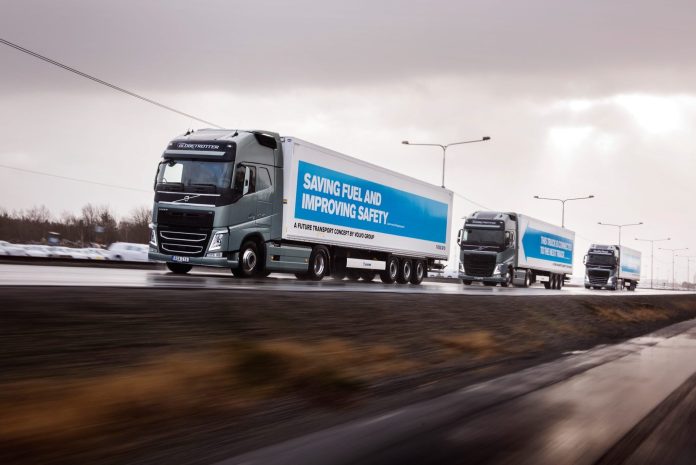A consortium of 16 industrial companies and research institutions have combined in a €9.5 million project to set out the “groundwork” for truck platooning with autonomous and semi-autonomous vehicles, as the primary use case to establish usage of 5G and Wi-Fi in intelligent transport systems.
The three-year 5G NetMobil research project, convened and funded by the German government, has set out to define and develop communications standards to enable inter-networking between autonomous vehicles and other roadway elements. The group is looking at 5G, and also Wi-Fi-based alternatives, notably the new standard ITS-G5.
Industrial groups backing ITS-G5 argue the technology is here now, unlike 5G-based cellular vehicle-to-everything (C-V2X) technology, which is some years away. 5G NetMobil said it is “now presenting” its findings to “enable major strides for a new era in mobility”.
Partners in the 5G NetMobil project are pursuing different ways on 5G and ITS-G5. “This project aimed to build the foundation for standardising both technologies and enabling manufacturer- and technology-agnostic communication,” a statement said.
But a press statement, nominally from Bosch, as one of the headline acts in the consortium, revealed little real detail of the findings. The new work on “networks, security, and protocols” is “underpinning efforts to standardise specifications, develop new business models, and ramp up the partners’ first production runs,” it said.
Thomas Rachel, parliamentary state secretary in the German Ministry of Education and Research, commented: “We have achieved decisive milestones on the road to fully connected driving and are demonstrating how modern communication technologies can make our road traffic safer, more efficient, and more economical, all at the same time.”
Truck platooning, where commercial vehicles join up in closely-ranked convoy, with synchronised acceleration, braking, and steering, is the primary use case for testing and defining communications around autonomous vehicles.
The project investigated certain other use cases, alongside: parallel platooning of harvesters in agriculture; a crossing assistant that uses infrastructure-based detection to protect pedestrians and cyclists; and smart traffic control that enables vehicles to ride a wave of green lights and steers them swiftly through city traffic.
The group defined how to tailgate trucks at less than 10 metres apart, it said, without revealing exactly how, apart from making reference to radar, ultrasonic, and video sensors, and to vehicle-to-vehicle (V2V), infrastructure (V2I), and network (V2N) communications as the mechanism to share data in real time, even beyond line-of-sight.
“Direct V2V and V2I communication has to be failsafe, with high data rates and low latency, for fully connected driving to become reality. But what happens if the quality of the data link changes, leaving less bandwidth available for direct V2V communication?
“The experts developed an agile ‘quality of service’ concept to detect changes in the provided network quality and alerts the connected driving functions accordingly. This way, the distance between vehicles in a platooned convoy can be increased automatically when network quality decreases.”
The research also investigated 5G network slicing to ‘slice’ the main cellular network into discrete virtual networks, so a sub-network is reserved for safety-critical functions such as alerts about road hazards, and everything else – data transmissions to stream videos and update the road maps – goes over the main network, or in parallel slices.
“This research project has also made significant contributions to hybrid communication where the more stable connection – either the cellular network technology or a Wi-Fi-based alternative – is used to prevent the data link from dropping out while the vehicle is on the move,” the statement said.
Frank Hofmann from the Bosch group, who is coordinating the project, said: “The work is relevant to a wide range of applications. This not only benefits project partners from industry and research, but especially road users. The insights gained are now flowing into the global standardisation of communications infrastructure. They are cornerstones for partner companies’ further development efforts.“

